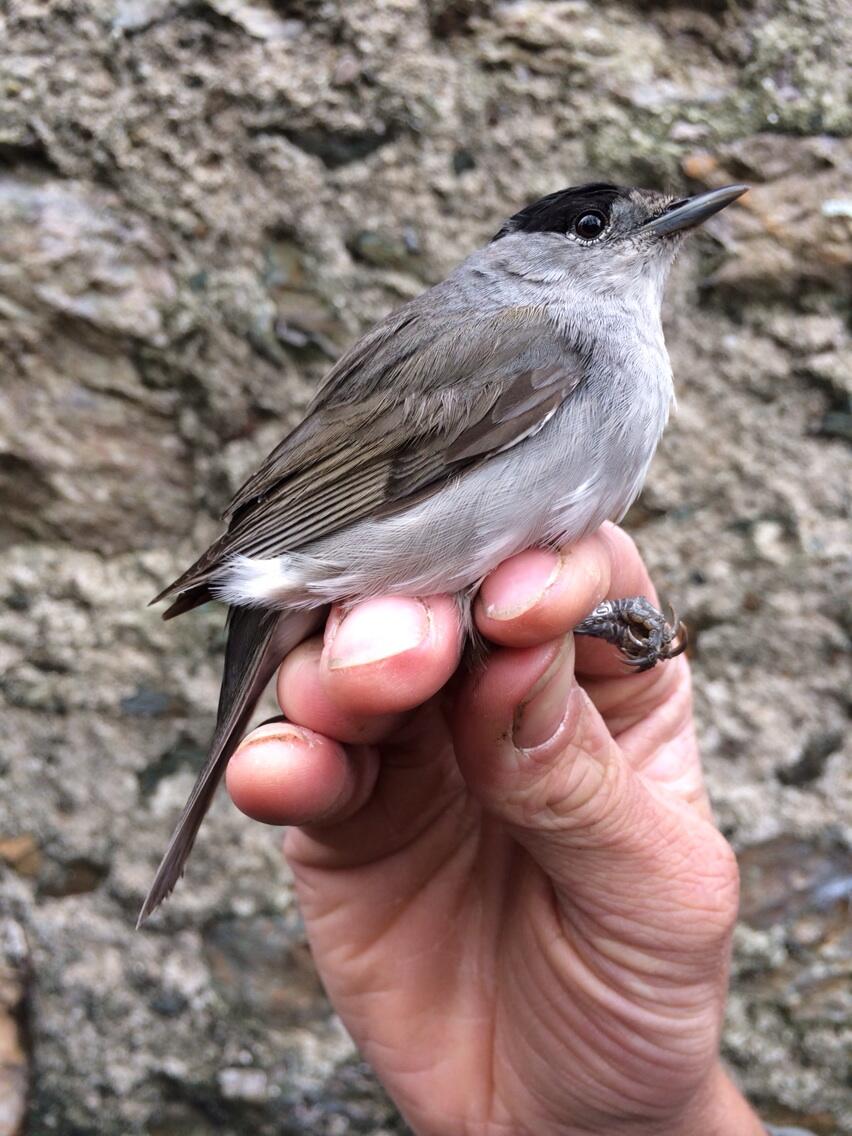
This male Blackcap was literally bulging with fat stores, with a fat/muscle score of 6/3. One would expect a little less fat on a freshly-arrived migrant, considering that some passerine migrants can lose as much as 50% of their initial body mass during trans-Saharan flights. This might indicate that this bird is not a 'true' migrant.
There were plenty of very smart Wheatears around, some of which seemed rather exhausted after their migration. The ratio of male/female birds continues to be much more in favour of males, with just the occasional female appearing at the moment
The apparently lonesome female Sparrowhawk continues to damage the island's breeding population of birds, in particular the Blackbirds. Since the start of the year, this one female has taken at least four of the island's breeding Blackbirds, with a another individual found dead at Ty Pellaf from an unknown cause. This is a rather high predation rate, and is already showing in the total breeding population of Blackbirds- at the moment, there are only about four breeding pairs on the island, compared with over seven in the last three years. Could this be the start of a decline in the island's breeding population?
Historically, Bardsey's population of Blackbirds has had its ups and downs: from just one pair in 1956, there was a huge increase, peaking at 45 breeding pairs in 1967, and above 30 pairs in the 1970s. However, after 1980, the population began to steadily decline, leading to just one pair in 1992. The island's former breeding population became extinct between 1994 and 1996. What was the reason for this rapid decline? Although there is a small cocktail of voiced causes, Sparrowhawks seem to be the main suspects. As can be seen from the above line graphs and bar charts, the annual number of Sparrowhawk bird days (lower chart) is closely correlated to the number of breeding Blackbirds (upper graph) on the island. As can be seen from the graphs, there was a steep increase in the number of Sparrowhawks on Bardsey from 1987 onwards, which closely mirrored the downward spiral in the Blackbird population. One can only hope that this current decline will not be quite as severe on the population.

These fresh Little Owl pellets were found on the mountainside above Plas in the morning, where an adult had been heard calling the previous evening. The contents suggest that the owls are managing to find a plentiful supply of Mice and Shrews




No comments:
Post a Comment